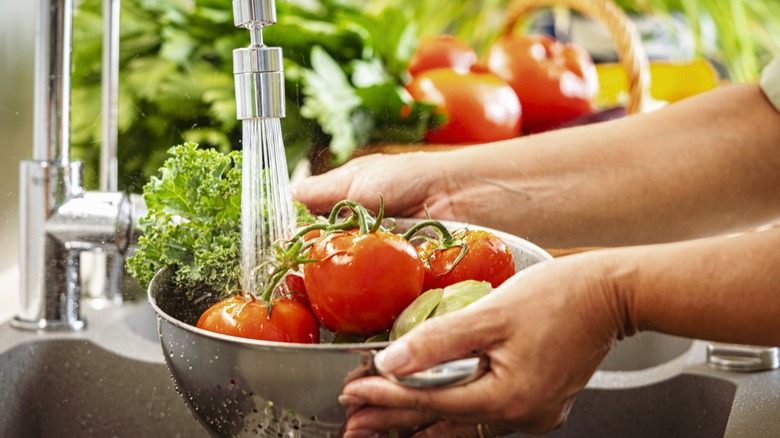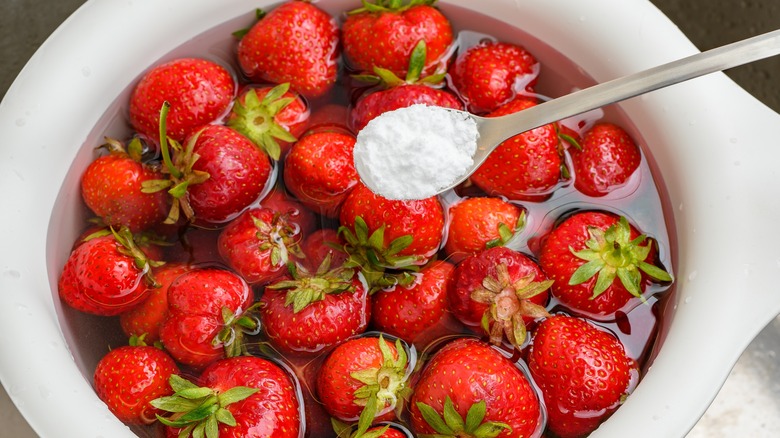Should You Be Cleaning Produce With Baking Soda?
We may receive a commission on purchases made from links.
Just as you need to open frozen veggies properly to avoid freezer burn, you should always wash produce before eating or cooking with it. Who knows how many sneezing children and grabby shoppers have contaminated your fruits and veggies. And that's before mentioning things like pesticides, fungi, and other microbes that produce can harbor. After carefully looking out for produce red and green flags at the grocery store, you want to ensure your fruits and veggies are clean and ready. Fortunately, baking soda can help, but it may not be worth the time and effort for everyone.
Baking soda has become a popular cleaning agent for fresh produce because it is adept at removing pesticides. In a 2017 study published in the Journal of Agricultural and Food Chemistry, researchers applied common pesticides to Gala apples and tested them with three different washing methods. In the end, baking soda removed nearly all pesticide residue, beating out tap water and the bleach solution favored by harvesters. (Do not wash your produce with bleach at home!) Moreover, as a mild abrasive, baking soda can gently clean the surface of fruits and vegetables to remove bacteria, though it can damage more delicate produce if soaked too long.
That said, a 2011 study from the University of California found that pesticide levels on produce the Environmental Working Group labels the "Dirty Dozen" (nonorganic produce with the highest amount of pesticide residue) are often negligible and below levels that are harmful to consumers. So ultimately, the benefits may be minor overall, but they're still worth considering if you want to get rid of as much synthetic pesticide residue as possible. So if you don't even know what "organic" means in the food world, it may not be worth finding out unless any amount of pesticides concern you. If not, a good rinse and scrub with your fingers or a brush is often enough.
Cleaning fresh produce with baking soda
If you would like an added layer of protection, though, there's no harm in cleaning your produce with baking soda. Just fill a clean bowl with cold water and add a teaspoon of baking soda for every 2 cups. If you're using your sink, make sure it is thoroughly cleaned and add 3 to 4 tablespoons of baking soda. To mitigate damage to thin-skinned produce, soak fruits and vegetables for only 12 to 15 minutes. You can gently scrub thick-skinned produce like potatoes, melons, and apples with a vegetable brush, like Zemozen's vegetable cleaner or OXO's vegetable brush, while you can rub delicate produce with your fingers under water.
But contrary to advice Rachael Ray used to give, only wash produce immediately before you use it. The moisture from washing can actually encourage bacteria to grow. Additionally, make sure anything that will come in contact with your cleaned fruits and veggies, such as a towel for drying, is also clean. Cross-contamination is no joke, and putting your clean produce on a dirty counter kind of defeats the purpose of cleaning it in the first place.

